Cornwall based artist Adrian Holmes tests the Jackson’s Curated Set for Moku Hanga Printmaking and shares his thoughts on each of the materials included and how suitable the set is for beginners to this method of Japanese printmaking.
Adrian Holmes Tests Jackson’s Curated Sets: Moku Hanga Printmaking
Last month when Jackson’s reached out and asked me to review some of their products I couldn’t refuse. I love trying new materials and I love any chance to make printing as accessible as possible. I have been using the exact same list of materials in the Japanese woodblock workshops I run here in the U.K and I’ve been putting these products to the test for the last six years, so for me it was a great way for me to finally get to review the products in little more detail.
The set contains:
- Japanese Magnolia 10 mm Side Grain Wood Block 110 x 160 mm x 3
- Awagami Washi Japanese Paper Printmaking Sample Pack, 21 x 26 cm, 20 Sheets
- Japanese Woodcarving Tool Set of 5
- Sosaku Japanese Inking Detail Brush Size 15 mm
- Sosaku Japanese Block Inking Brush, Size 60 mm
- Japanese Bamboo Baren Relief Printing, 10 cm
- Akua Liquid Pigment, 4oz/118 ml x 4: Phthalo Blue Green, Jet Black, Red Oxide, Burnt Umber
- Jackson’s Paper Guide
Firstly, when the curated set arrived, I got that little kid at Christmas feeling. The curated set is beautifully wrapped and comes in an elegantly designed box, giving it a real authentic artisan feel, but don’t judge a book by its cover, right? Opening the set, I was surprised at the range of materials offered in this gift package more than enough to get you started with making your own woodblock prints.

Jackson’s Curated Sets: Moku Hanga Printmaking
For me when teaching the basics of woodblock printing you need materials which are reliable, affordable but also true to the nature of what professional quality tools offer. These included a good set of carving, quality wood, a few solid brushes for applying the pigment, a baren for printing, a reliable set of pigments and last and maybe most importantly a set of Japanese papers on which to print. So, let’s dive in and talk through the different materials and products that Jackson’s has included in the curated set.
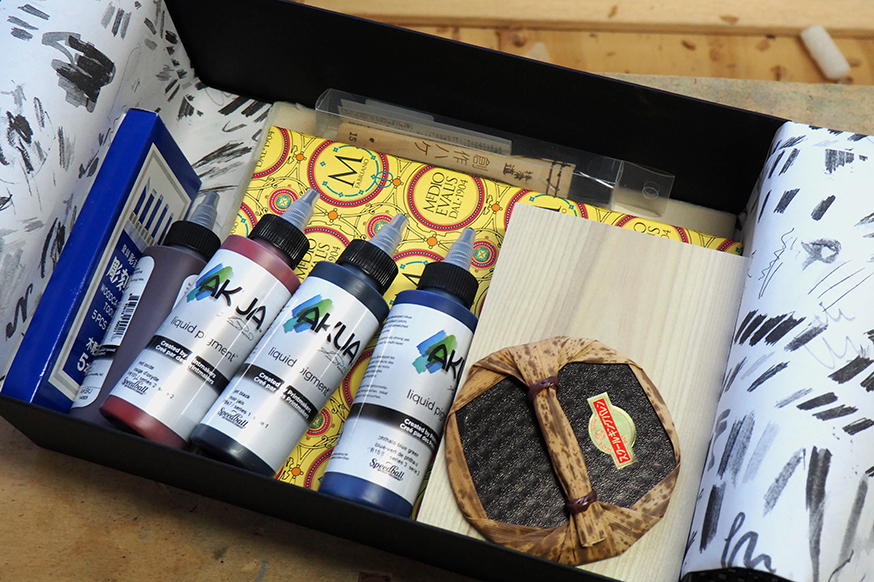
Carving Tools
Let’s begin with carving tools, one can spend a fortune on accruing the best tools before being able to carve or now here to begin. The pack contained a Set of 5 Japanese Woodcarving Tools, I’ve used these for many years in my introduction to Japanese woodblock course and they are a good beginner set. They come sharp and unlike a lot other cutting tools they have a nice wooden handle which is not only comfortable but is a good general size for different sized working hands.
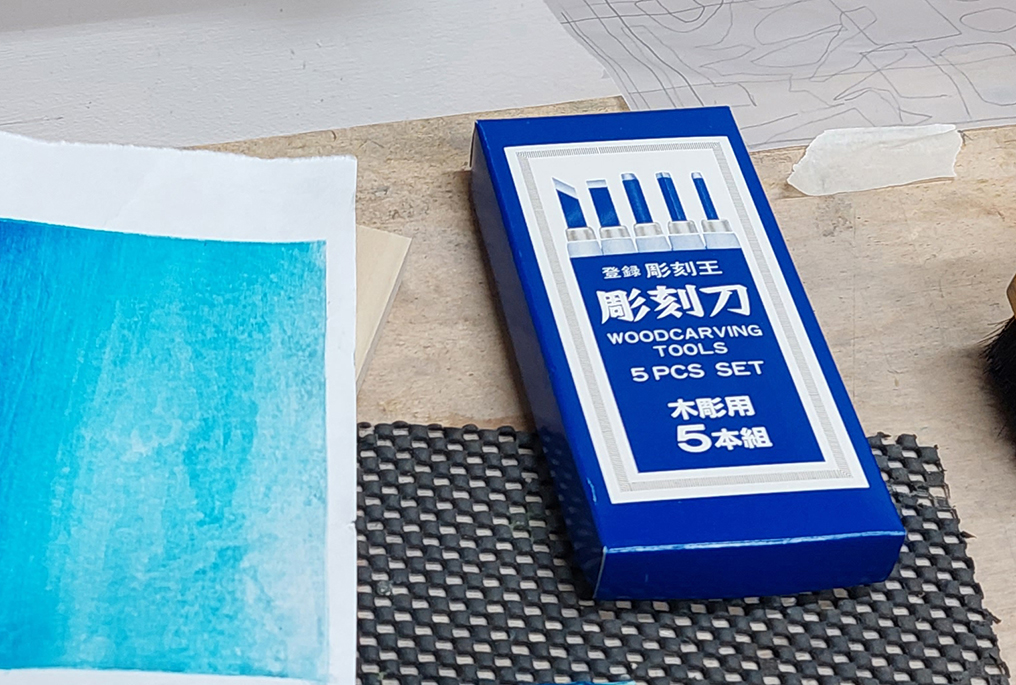
A little tip is you can cut them down to suit your own hand size (just make sure you take the time to measure before you cut). They do tend to lose their edge after cutting harder woods such as magnolia, but can be sharpened to some effect using a proper whetstone. The pack comes with a small token stone, but I’d suggest getting yourself a whetstone suit for sharpening as this will make your life easier. All in all, a good introduction pack which is affordable and will allow you to become familiar with the Japanese style of carving.
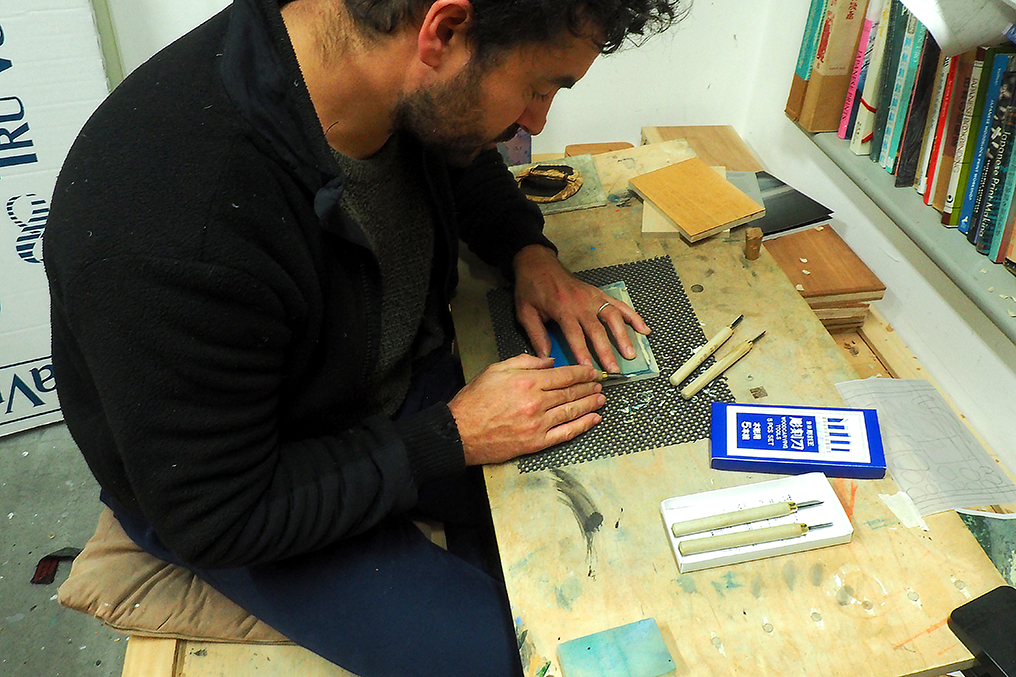
Wood
Along with the good quality carving tools the kit provided 3 pieces of Japanese Magnolia 10 mm Side Grain Wood Block 110 x 160 mm. Magnolia wood is the perfect choice for carving as it is not only relatively easy to carve compared to other fruit wood like Cherry, but it also allows one to carve a relatively good amount of detail without chipping or splintering. I was also impressed with the quality and density of the wood provided, as some suppliers will offer a lower quality magnolia which has been of disappointment. It has a lovely grain which can be utilised and shown off in the actual print. These plates would be good for printing small greeting cards but a little bit small for anything adventurous. On the whole, a good choice in wood.

Brushes
Next up is the humble Maru Bake, printing brush Sosaku Japanese Block Inking Brush, Size 60 mm used to blend the pigment onto the woodblock. Depending on size it can come with a hefty price tag, so the Sosaku brushes provided by Jackson’s come at a really good price point, which is obviously something really important to consider. Having used these brushes for my workshops, and sometimes for a few test prints of my own, I can vouch for these being a good quality brush which disperses the pigment on the block well.

Like with all Japanese brushes you need to prep these brushes before use by singing the bristles on a hot plate and then rubbing the burnt fibres off. Traditionally with a sharkskin, but sandpaper is fine. The pack comes with both a 60 mm brush and a Sosaku Japanese Inking Detail Brush Size 15 mm or Tebake which is more like a stencil brush for smaller areas. They are both robust, sturdy, with a good density of bristles which is important to keep an even and clean brush stroke. The brush both holds a good amount of pigment and allows for the colour to be blended into the woodblock in an even and controlled way. A big thumbs up for the brushes and a great entry level brushes which will last for life if treated well.
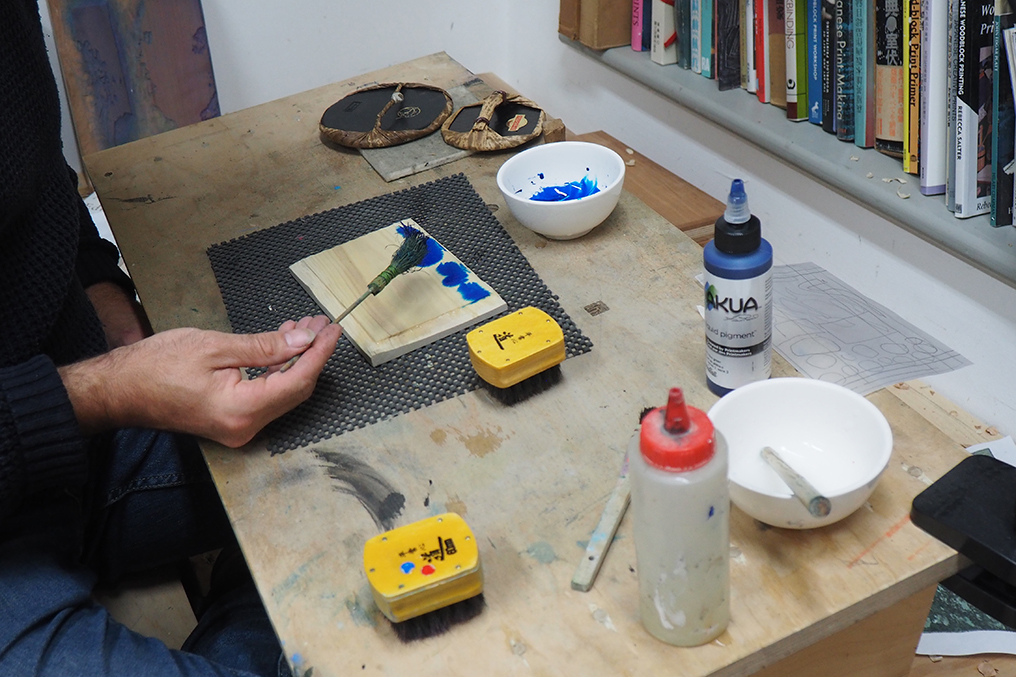
Pigments
As with all printing, finding the right pigments which work for the artists is quite personal, but also can be a hard to navigate, long and difficult process. The gift pack came with Akua Liquid Pigment, a Phthalo Blue Green, Jet Black, Red Oxide, Burnt Umber and having tested them all with the brushes provided they held up well with a good finishing result.
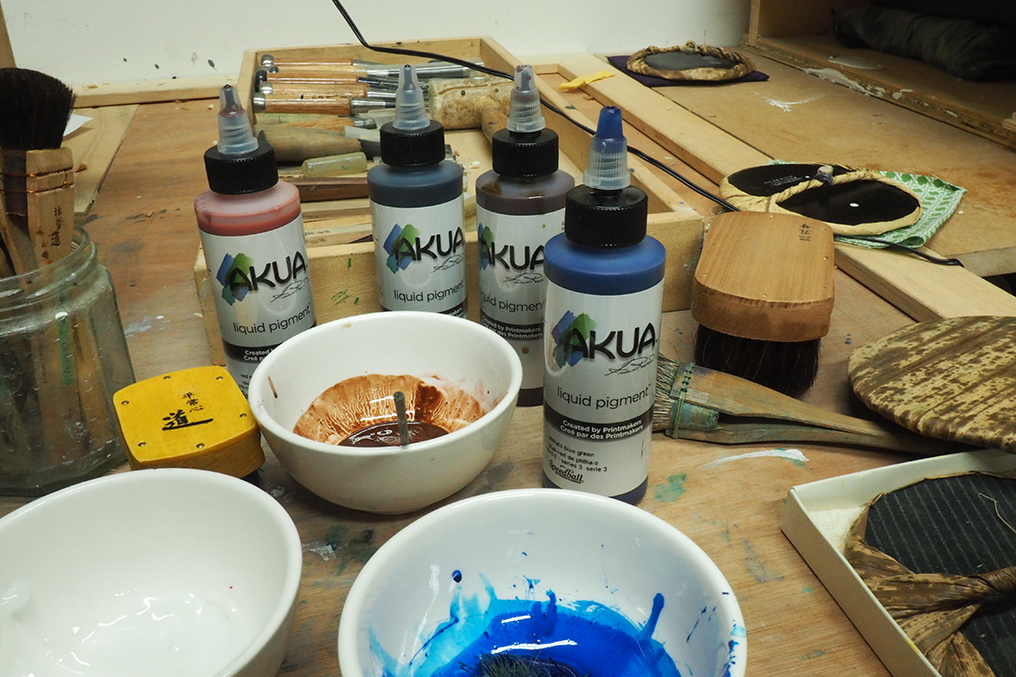
To date my choice of pigments are raw powder pigments (Ganryo) or using the Holbein’s pigments from Japan, having found these to be such high-quality pigments I have rarely looked elsewhere so it was great to get to try these Akua pigments for free. They work very similar to Holbein’s pigments and have a similar vibrancy and colour fastness which is of high quality. Like Holbein, the Akua Liquid Pigment Inks are relatively slow drying which allows for an extended working time.
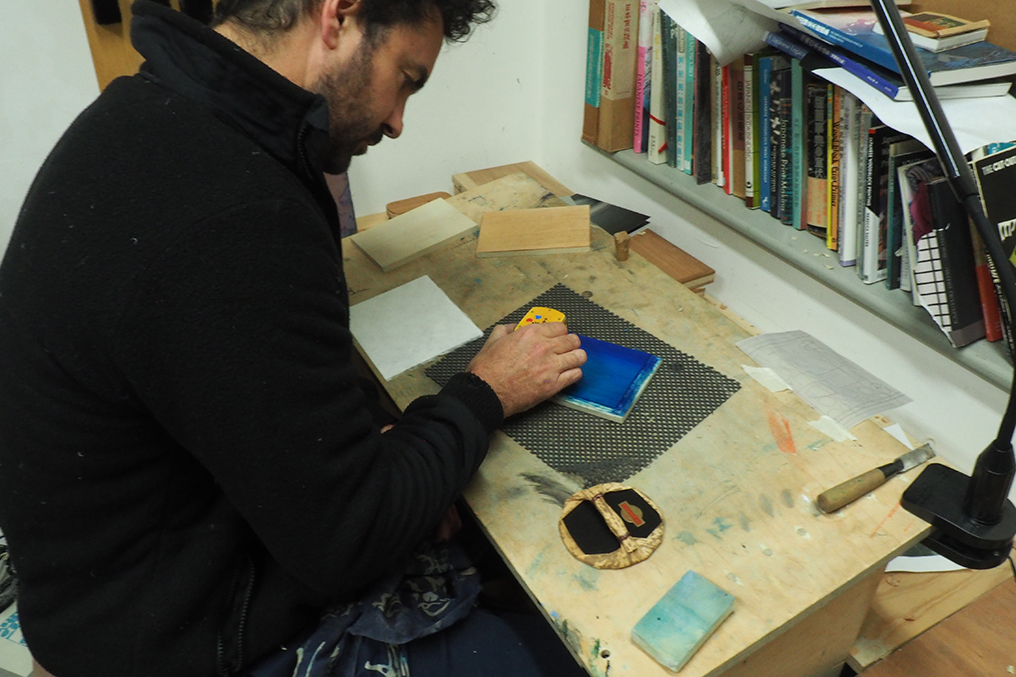
Akua’s consistency is slightly thinner than Holbein’s and requires adding a slight bit of gum arabic to thicken it up, but all four hues were vibrant, and I will definitely be exploring these further using them with Japanese woodblock printing. A good product and you get a good bang for your buck with the bottles containing 118 ml which will last a good time even if printing a lot.
Baren
The humble baren is an object which is probably, for the true Japanese woodblock printer, the most important tool in their arsenal which you can also spend a lot on. The baren in the pack is a good starter baren and will allow one to print a fair number of prints before wearing out. What it doesn’t have is the strength and stiffness that a slight more expensive barn will have.

Paper
Moku Hanga couldn’t be without a decent Japanese paper so I was excited to get to play with the Awagami Washi Japanese Paper, 21 x 26 cm, 20 Sheets in the gift box. I know from prior experience how good these papers are, and I do use them from time to time depending on the style of print I’m working on. They are made to a real high standard and crafted in southern Japan at the Awagami factory, known for its knowledge and 300 years of washi paper-making, so you know you’re in good hands.
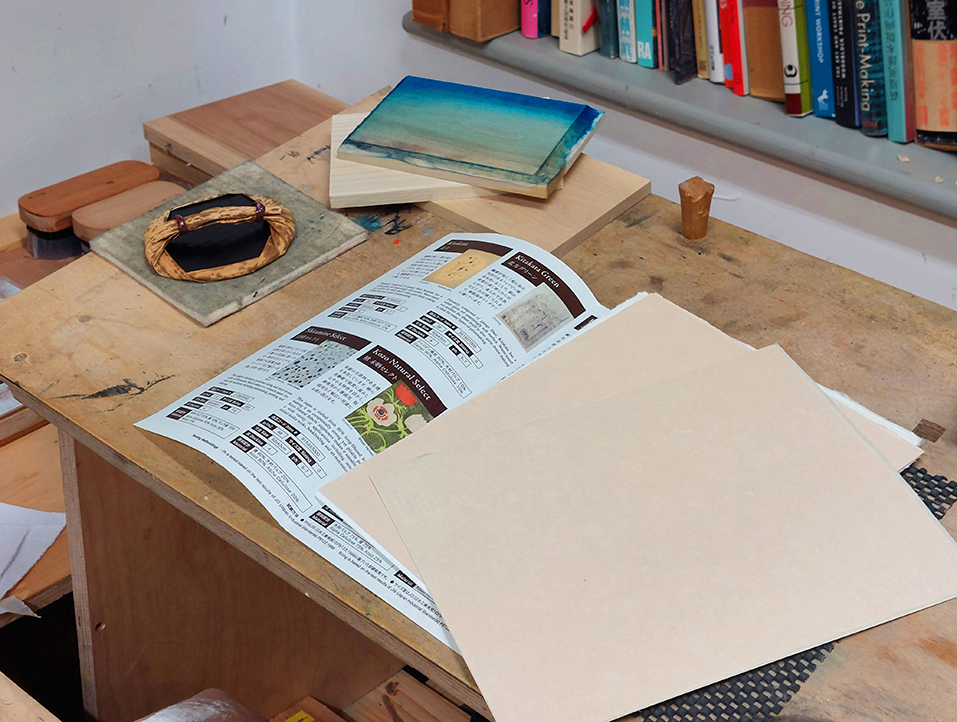
What is nice about this pack of editioning papers is the variety. Having a selection of 10 different papers, all unique in texture and characteristics, gives you a chance to decide which paper is for you. The papers are made using traditional Japanese fibres such as Kozo and Gampi. For me personally, I found the Hosho and Shiramine paper to suit my printing style, as these are a little thicker and allow more pressure to be applied using the baren.
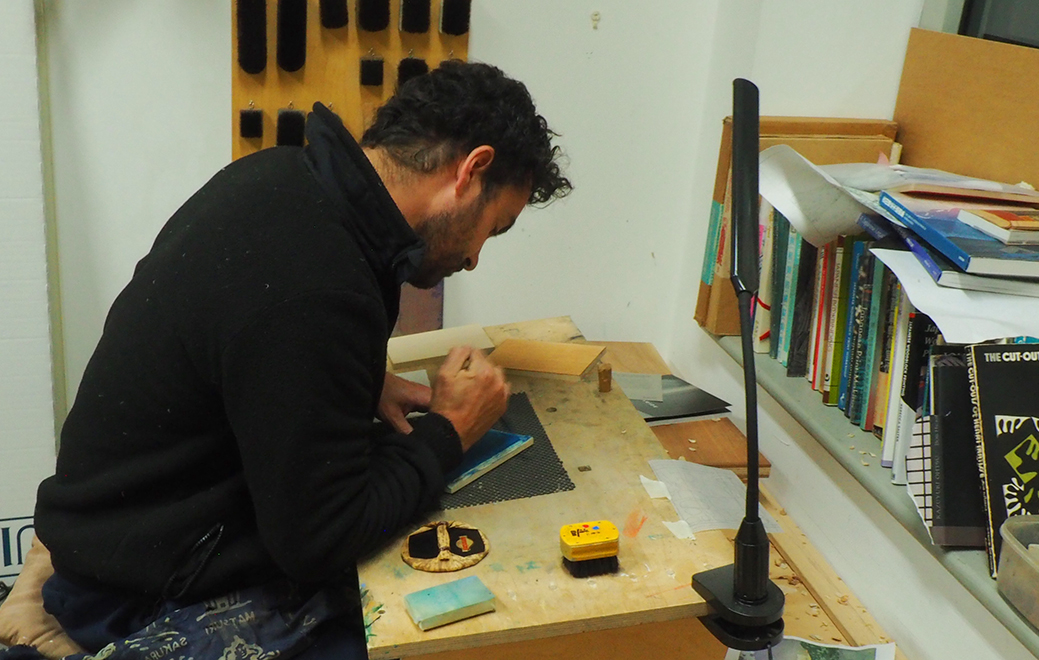
Overall, this curated set from Jackson’s is a well thought out set, and perfect gift for anyone looking to get into Japanese woodblock printing. The choice and quality of materials is bang on and the curated set has pretty much everything one needs to get started. All the products I tested held up to pretty rigorous testing and on the whole, were a pleasure to use. For me the paper and the pigments stole the show and look forward to exploring these more. I would without a doubt recommend this to my students and the wider woodblock community. The price point for this set was considerate for what was included. I don’t think you could find anything else on offer. Jackson’s quality of presentation is amazing and this would be a perfect for anyone keen to begin the journey in printmaking. A perfect Christmas gift which I would mind being sent.
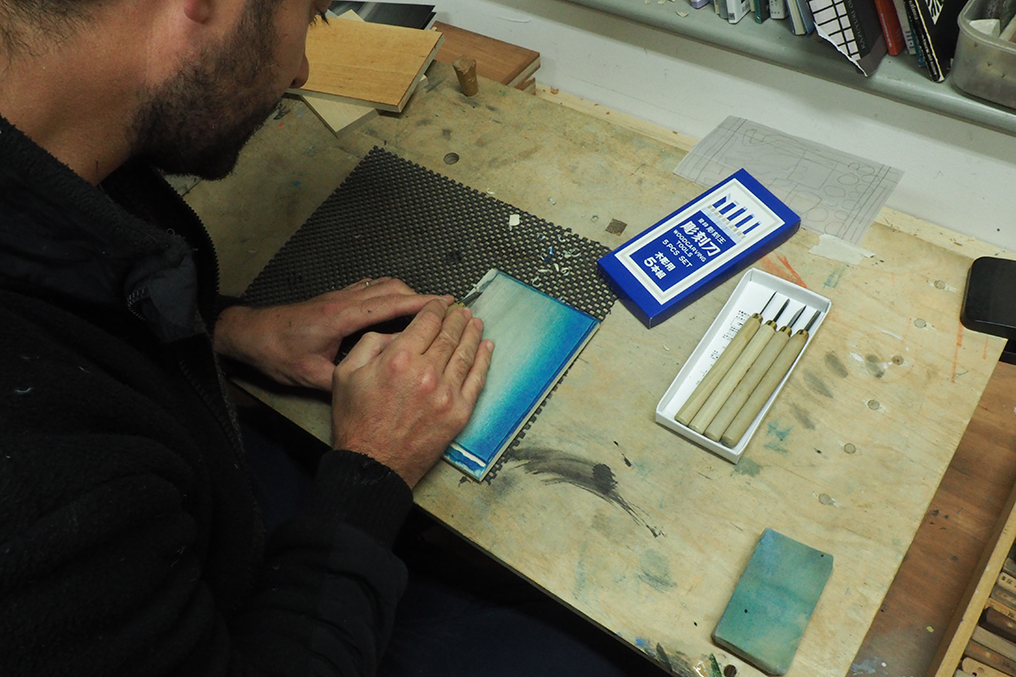
About Adrian Holmes
Adrian Holmes is a printmaker devoted to Japanese printmaking and Sosaku hanga. He graduated from the University of Plymouth with a degree in Visual Arts. He fell in love with woodblock Japanese printmaking whilst living in Japan and he began to study the craft and its techniques. Both self-taught and working alongside Japanese woodblock artisans exploring the capabilities of the printing process, Adrian divides his time between his woodblock practice and teaching woodblock printmaking In the south west. Adrian is based at Krowji studios in Cornwall and teaches Japanese woodblock printmaking at both St Ives School of Painting and the West dean College of Arts.

Adrian Holmes in his studio
Further Reading
Moku Hanga: Japanese Woodblock Printmaking
Testing the New Sláma Press
Woodcut Printmaking for Beginners – What You Need to Get Started
Printmaking: Comparing Lino, Softcut, Speedy Carve and Japanese Vinyl
Shop Jackson’s Curated Sets: Moku Hanga Printmaking on jacksonsart.com
Read more reviews of Jackson’s Curated Sets

